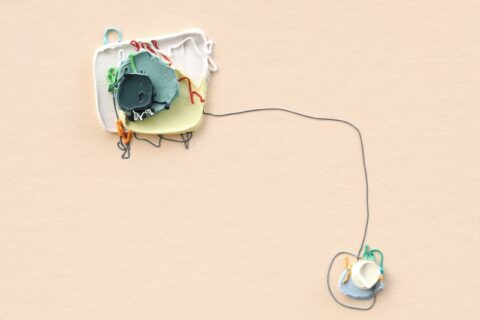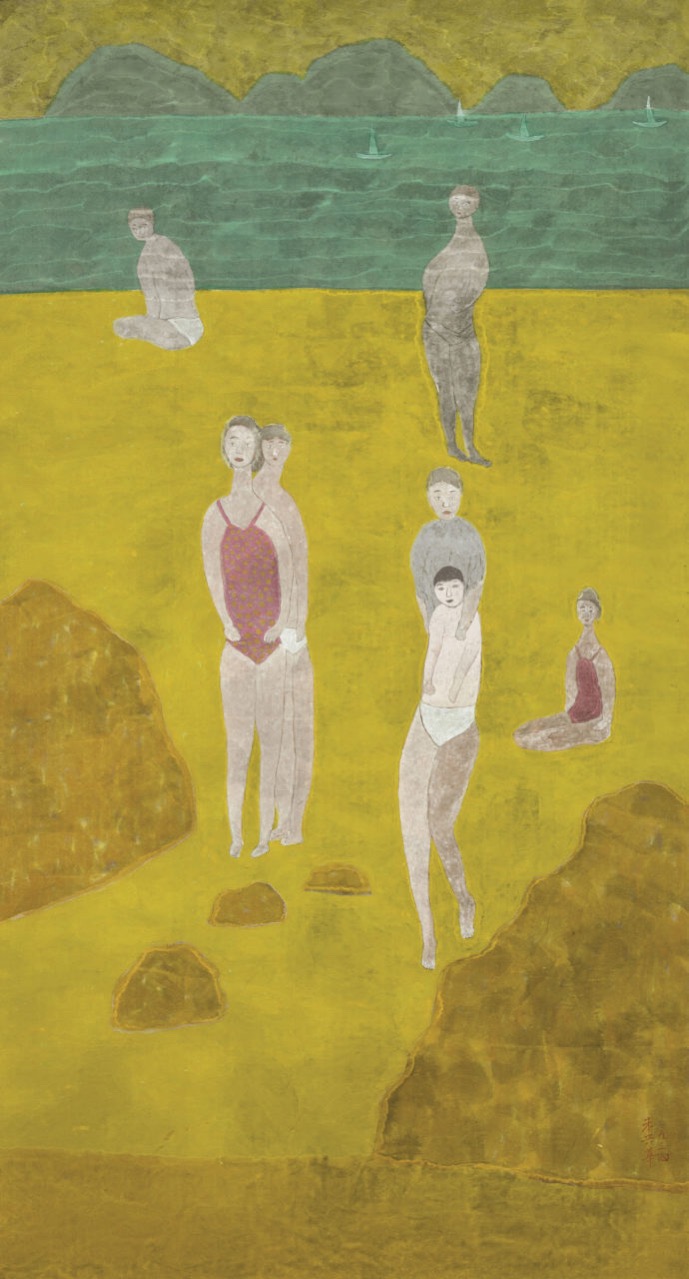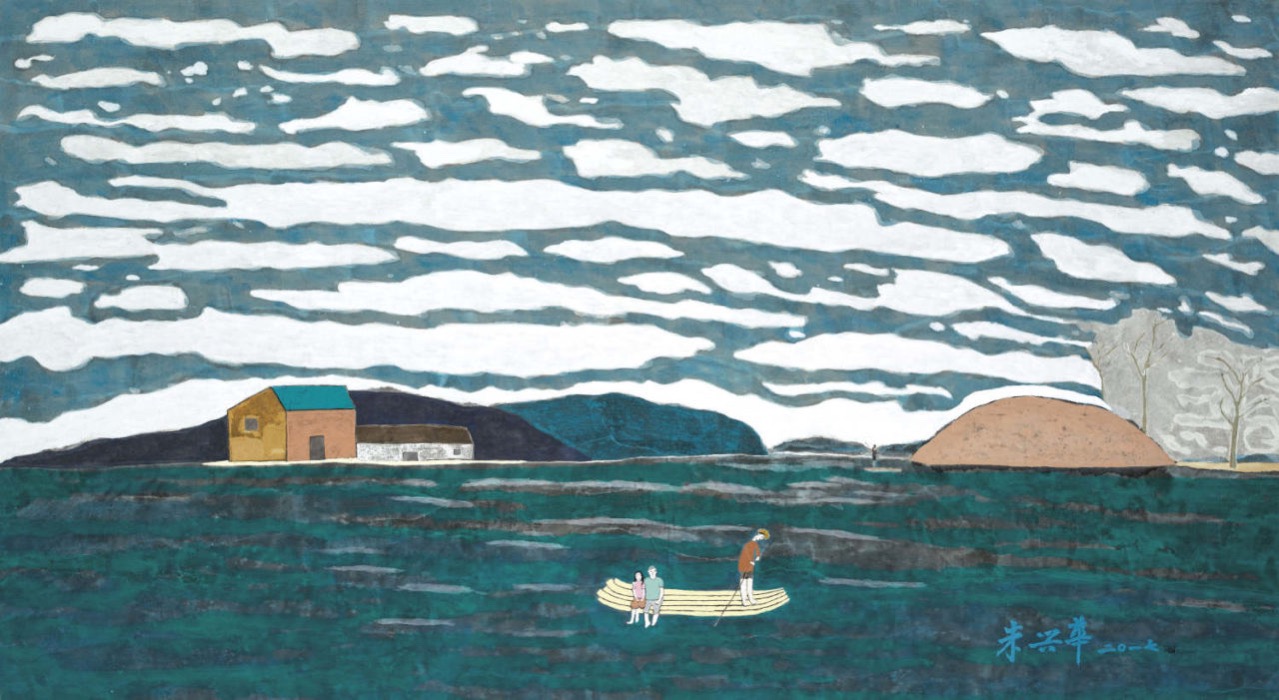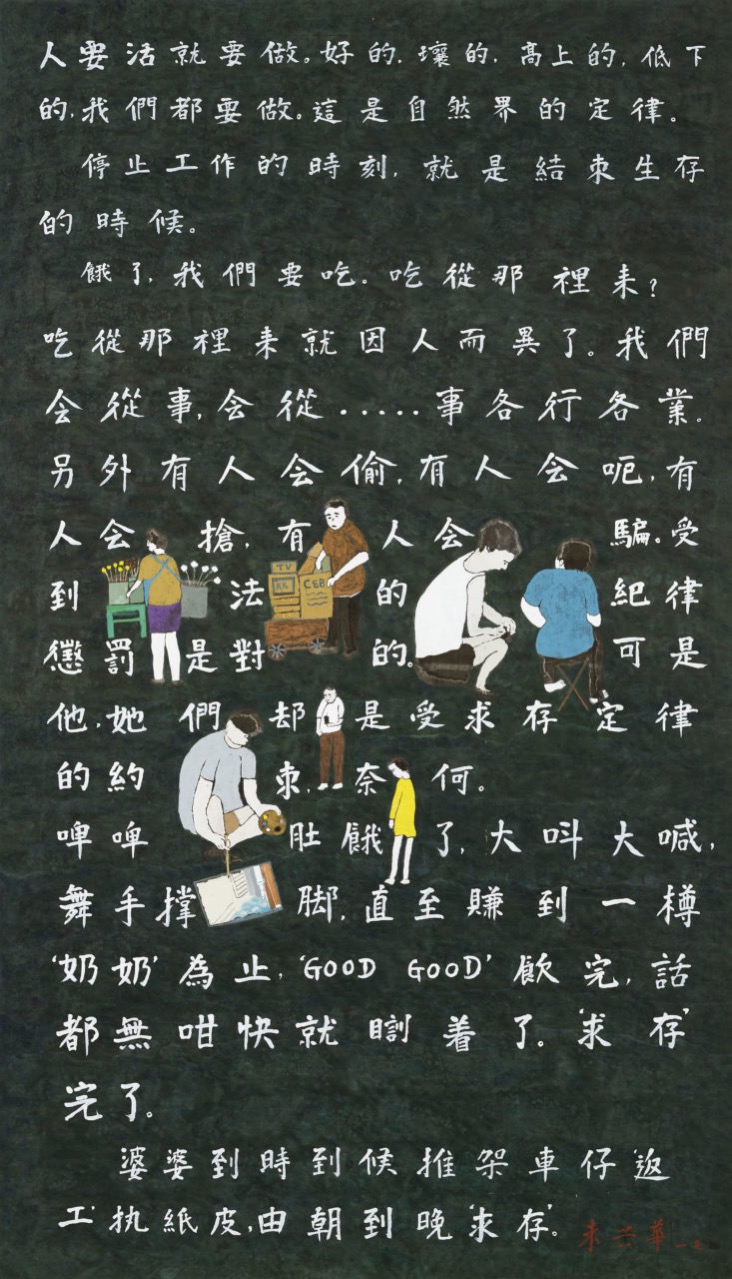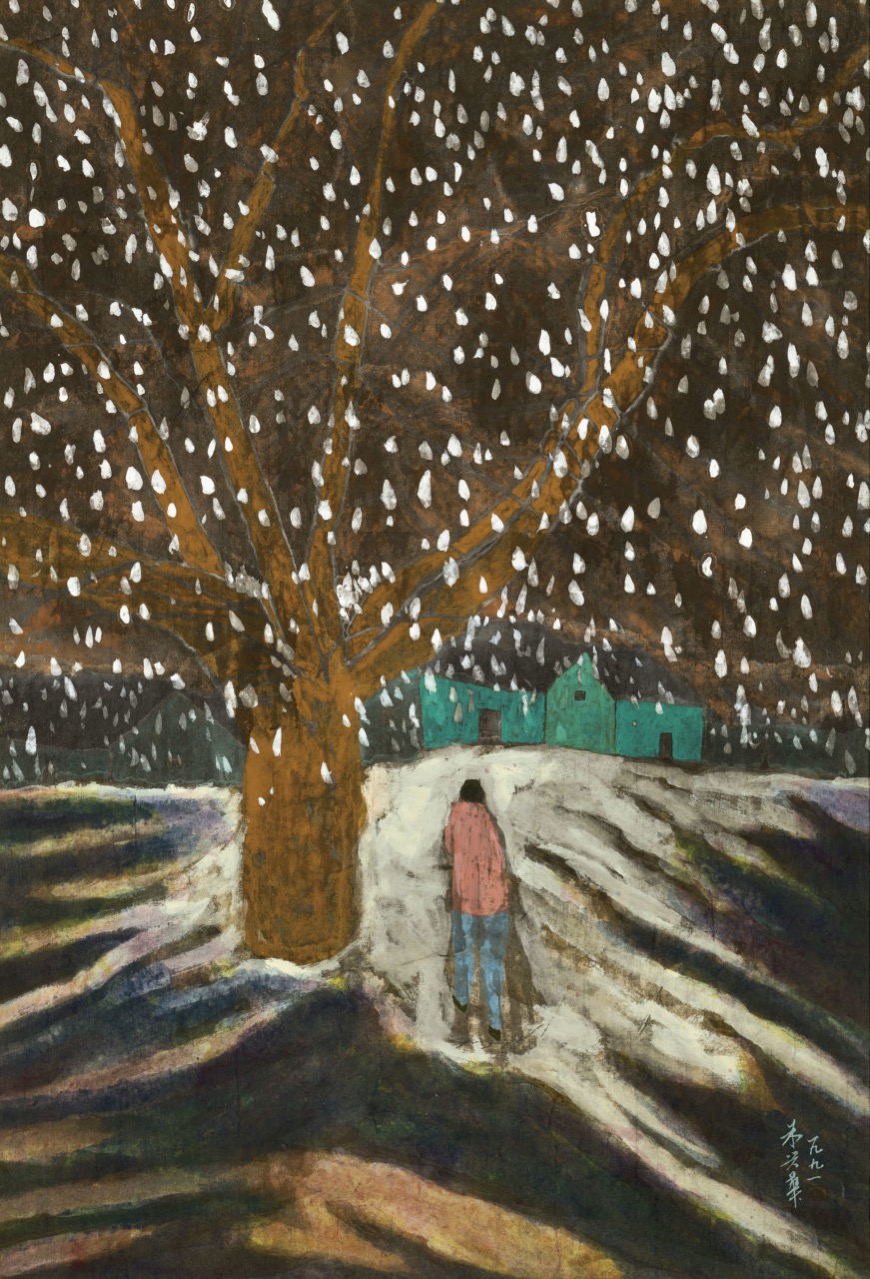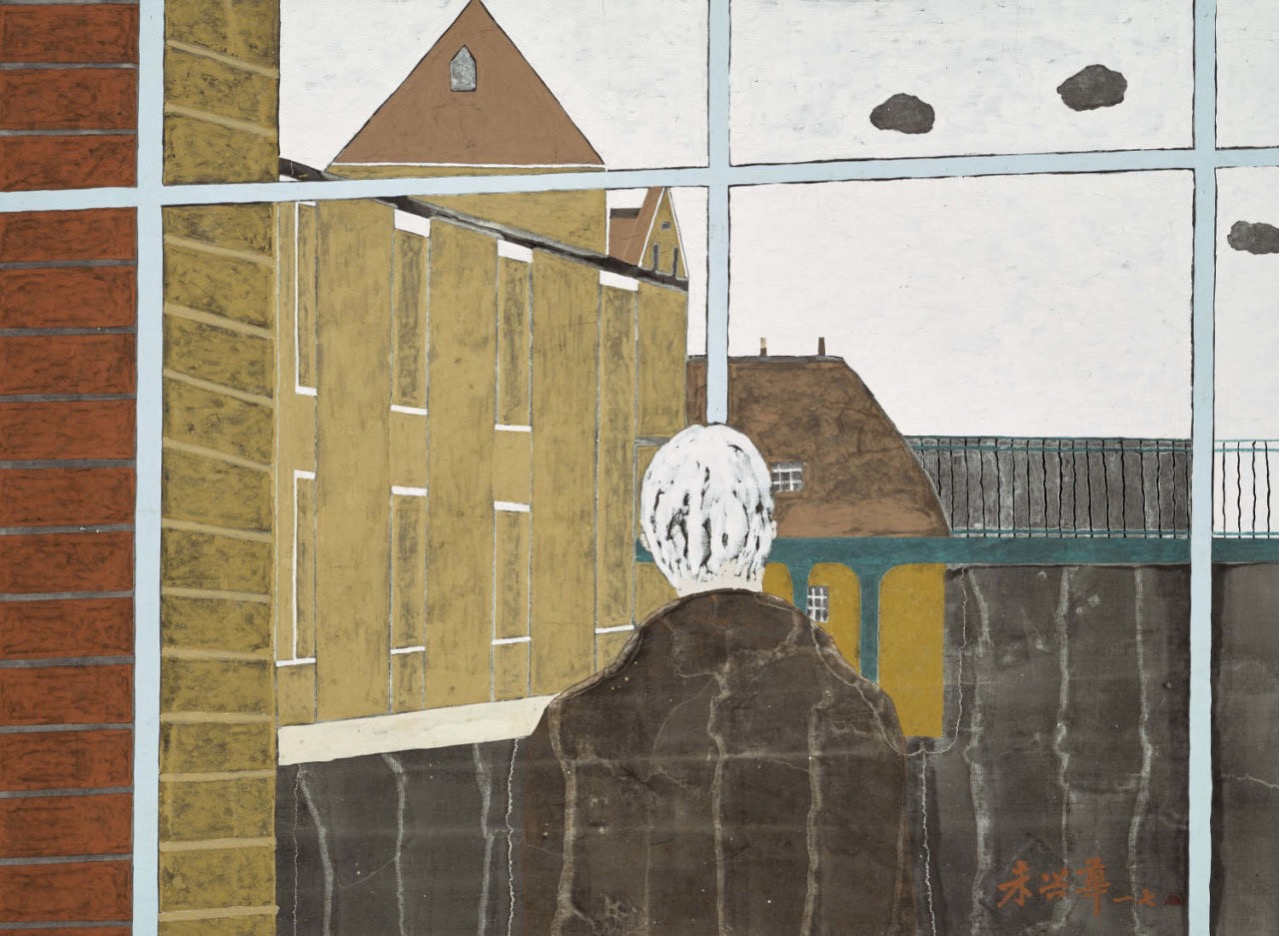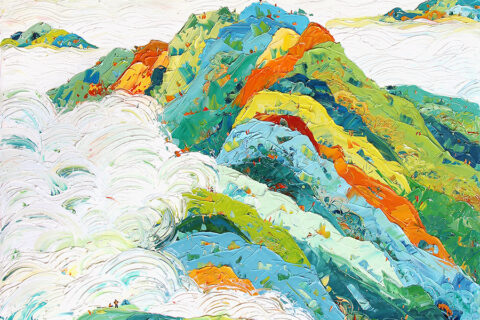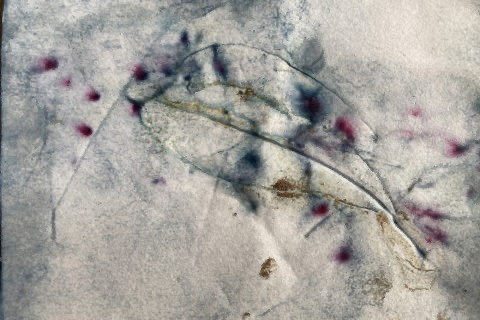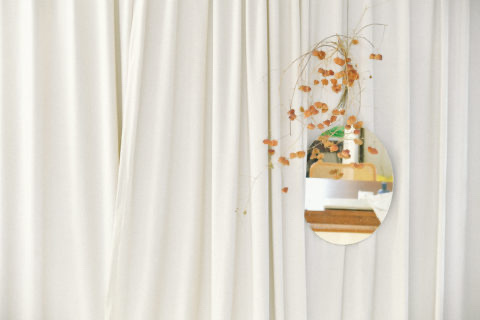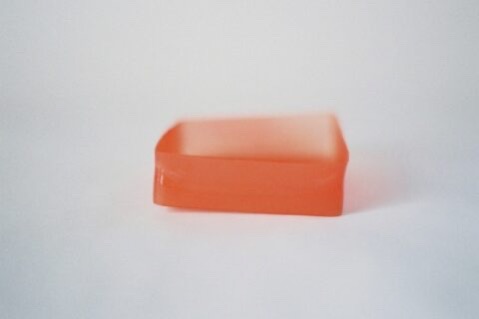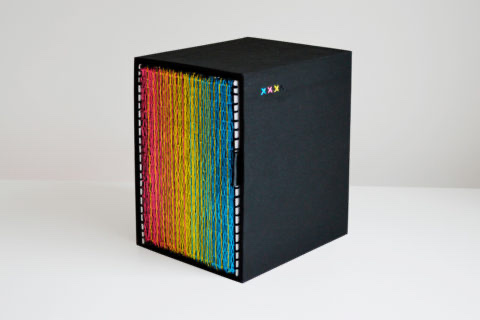畫家朱興華說生命中的瞬間最讓他動容,他形容為「instant of life」。日出日落、植物生長、萬物的一呼一吸皆是生命展現在瞬間。
從沒受過正式的藝術教育,朱興華當了二十多年精神科護士,繪畫都是自學而成。一直都是業餘畫家,直至一九九二年退休始成為全職藝術家。心理科護士的專業背景造就了朱興華畫中獨特的風格 —— 似是寧靜安穩又彷彿哀傷寂寞。醫院中病人扭曲的身體及精神狀態,對他來說沒有異於常人更不會以奇怪或同情眼光視之,反而是云云生命中的瞬間。他畫中的人物姿態都不太日常但面容卻安靜,總是雙腳胖胖跟身體有著奇怪的比列。像《媽媽和她的孩子》似是在沙灘中嬉戲,卻沒有那種日常喧鬧的氣氛,背景的兩個身影,不知是誰,也不需要知道是誰,安靜地玩耍不打擾別人便好了。《歸家》中那個背影,似是在畫中凝住的一刻於雪中慢步前行。朱興華畫中細小的人物像被景觀包圍著,他愛畫細小的人物,大幅度的景觀是留白,是畫家給觀眾感受畫意的空間,那些是色彩繽紛的留白。
朱興華畫內的風景及人物並不寫實,是存在他腦海中發生過的生活點滴,又或者是他對人生的看法。近年以書法加入繪畫中,因為有些事情以繪畫都不盡表達他的感受,於是加以書法。好像戰爭,他回想從前在父親口中聽過戰爭如何破壞人家,近年又在媒體上讀不同的戰爭情況,他以書法及繪畫描寫從未親身經歷、卻又總是在發生的戰爭。《戰歌》是他的大型書法帆,以歌聲喻作爆炸,燈光作火光。《人為戰爭而生》是呼應書法,在深藍的天空中,都分不清那是火光還是煙火。
朱興華老說看已年紀大,對人生總有很多感受。八十多歲還未有封畫筆的打算,指人活著就是要存活,存活就是要工作。他的最新兩張作品《親愛的家:聖查爾斯醫院》及《求存》總結了他近年的心境。前者是他退休回到英國聖查爾斯醫院,年青時他那裡學習護理知識。後者是他近年對不同階層存活的寫照。
「人要活就要做,好的,壞的,高上的、低下的,我們都要做……」環顧人生,他在畫中這樣寫著。
Chu Hing Wah, a painter, says what moves him the most are the moments in our lives. He refers to them as “instant of life”. Sunrise and sunset, the growth of plants, and the inhale and exhale of all living things are without exception life presented in moments.
Having worked as a psychiatric nurse for more than two decades, Chu Hing Wah has never received formal education in the discipline of arts. A self-taught painter, he had been an amateur painter all along, and it was not until 1992, when he retired, that he became a full-time artist. His background as a psychiatric nurse has contributed to the unique style of his paintings — seemingly tranquil and peaceful, and yet melancholic and lonely. He sees the twisted bodies and distorted minds of hospital patients as ordinary, and he never looks at them in a strange way nor with sympathy. Instead, he treats them as moments among the multitudes of lives. The figure of the characters featured in his paintings is out of ordinary and yet they all have calm facial expressions, with slightly flabby legs that have a weird proportion with the rest of their bodies.“Mother and Son on The Beach” seems to depict a scene of fun on the beach but with the absence of the ordinary jolly and noisy atmosphere. The two figures in the background are unknown individuals, but there is no need to know who they are as long as they play quietly, without disturbing the others. The back of the figure in “Homecoming” seems to capture a frozen moment of stepping slowly forward in the snow. The little figures in Chu’s paintings seem to be surrounded by the landscape. He loves to draw small figures, and the large portion of landscape is there for leaving a blank so as to give spectators some space to feel the pictorial meaning. They are colorful blanks.
Neither the sceneries nor the individuals depicted in Chu’s paintings are realistic. Rather, they are bits and pieces of life happenings stored in his brain or his views on life. In recent years, he has added calligraphy to his paintings because painting alone falls short of enabling him to fully express his feelings towards some things. Take wars for example. He recalled his father telling him about how wars destroyed families, and in recent years, he has also read about various war situations in the media. He then used calligraphy and painting to paint and describe wars, which he has never personally experienced and yet are always happening. “The Song of War” is his large-scale calligraphy piece, in which he draws an analogy between the song of singing voice and explosion, and between light and flame. “Are We Born for War?” echoes the calligraphy in the former piece; under the deep blue sky, one cannot distinguish between flame and fireworks.
Chu keeps saying that he is already old and thus he always has a lot feelings towards life. Even though he is more than eighty years old, he does not intend to quit painting just yet. He notes that as living human beings, we have to live, and to live, we have to work. His two latest pieces titled “My Beloved Home: ST Charles Hospital” “ and “To Live, We Have to Work” conclude his state of mind in recent years. The former is about his visit after retirement to St Charles Hospital in the UK, where he acquired nursing knowledge in his youth. The latter is his depiction in recent years of the life of people from all walks of life.
“To live, we have to work, and whether the job is good, bad, high above, or down below, we still have to work…” writes Chu in the painting, based on his survey of life.
